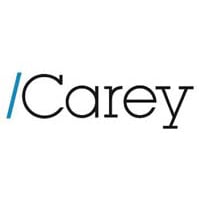
Legal and corporate affairs manager | Glencore International


Carlos Prat
Legal and corporate affairs manager | Glencore International
Focus on the challenges of remote mining companies
In my experience, from a legal point of view, as in-house lawyers we should advice the companies to avoid litigation, delays and potential fatal flaws. First, it is important to bear in mind that project finances are not relevant for communities. In addition, development solutions that make new projects environment and community friendly are not important if those improvements are not successfully communicated to stakeholders.
A successful endeavour is one that keeps an attractive NPV for investors but also encourages both community and stakeholders to support the project. An example that I always use is a 20 year-old project owned by Glencore in Chile. It is not the biggest or more profitable mine of the region, but back in the late 1990s accomplished many things that are essential today. The project is located the northern of Antofagasta in the middle of the Atacama Desert and required industrial water for its initial operation. For this purpose, water rights were identified from irrigation canals in the area around the city of Calama that thanks to the Loa River, which channels water from the Andes Mountains, allows for small-scale agriculture. At that time, the project developers bought water rights from the irrigation channels and several hectares of agricultural land. The water was to supply the mining operation more than 140 kilometres to the south. Since the extraction of this water and its delivery to the mine had an impact on the agricultural activity of Calama, as a compensation measure, the project offered to reforest around 100 hectares with native species (prosopis tree).
At that point, there was nothing different from other projects. However, over the years, the growth of trees was successful and, given its large surface area, it generated an ecological preservation area that has resulted in the arrival of birds, reptiles and insects, allowing for a re-population of the habitat and leading to an improvement of the ecosystem of the Loa River oasis. This, in turn, has generated several synergies and virtuous partnerships with the local communities. The project, in addition to contributing to the improvement of the ecosystem of the Loa River oasis, provides environmental lesson and promotes forestation, research and micro-entrepreneurship, among others.
This initiative has allowed the inhabitants of Calama to have recreational spaces, a forest that contributes to improving the city’s air quality, to maintain biodiversity and conserving the Calama oasis. In addition, the farmers who remain in the oasis have benefited from training, technical tours and micro-enterprises for the use of the Algarrobo seeds. The interesting thing about this case is that thanks to the development of a compensation measure to comply with an environmental and legal obligation, which could have remained just that, an afforestation, the project was able to go further, generating a great benefit for the region, both in environmental and community terms. Consequently, the project keeps the social license and reputation until these days.
Legal manager | Glencore Chile
Beginning his career as an associate at Cariola Diez Pérez-Cotapos in 2001, Carlos Prat’s rapid rise through the ranks prefigured his current extremely high status among Chilean in-house lawyers; his...
Legal manager | GLENCORE CHILE
Glencore, the Swiss multinational mining company, has a significant presence in Chile’s extensive network of copper mines. When the company took over Xstrata in 2013 to create one of the...